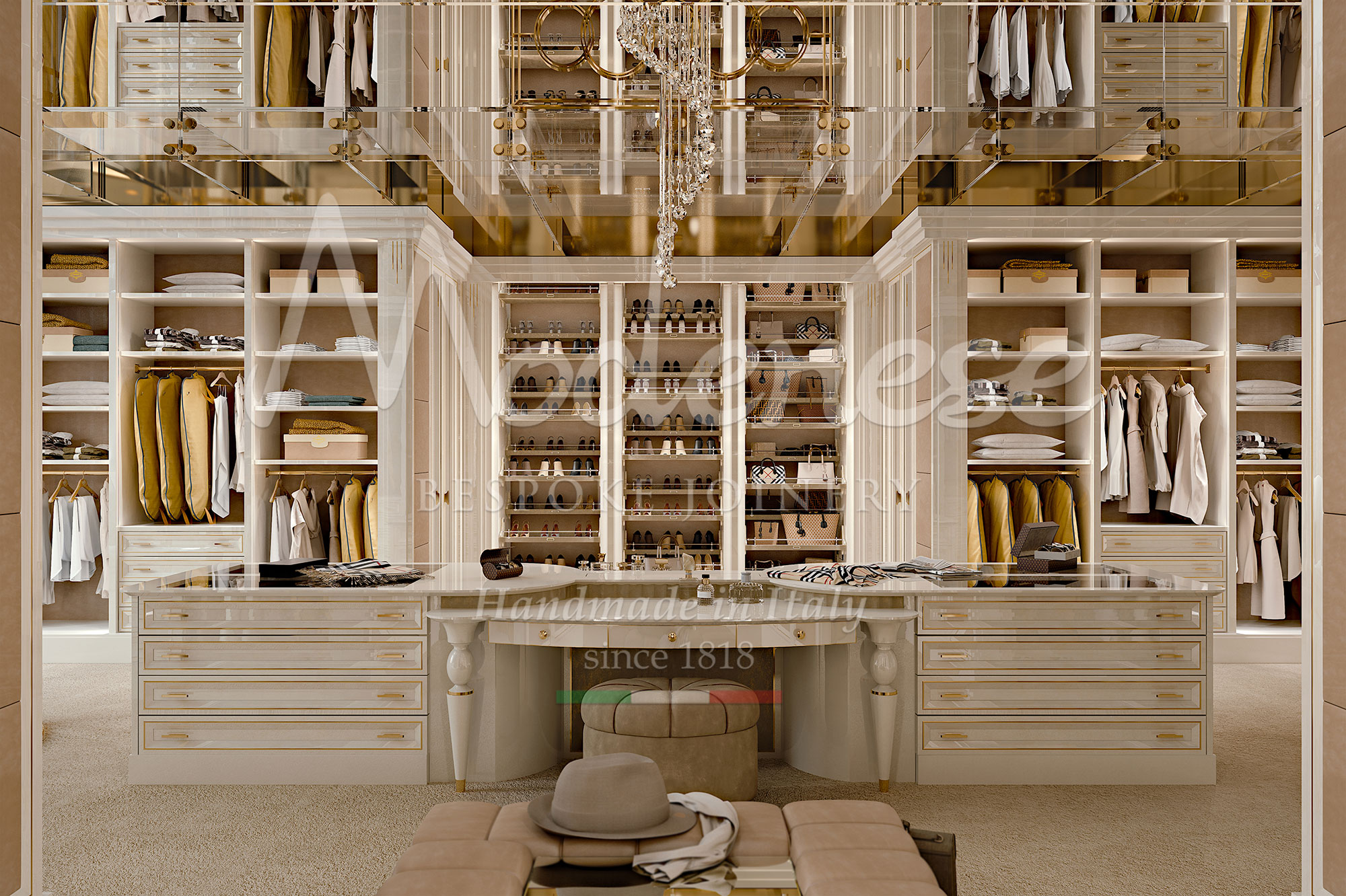The New Standard of Luxury
Picture this with me for a moment: You’re standing in what appears to be a pristine Italian art gallery, but instead of paintings on the walls, you’re surrounded by meticulously crafted walk-in closet systems that would make even the most discerning Milanese designer nod in approval. This isn’t just storage – this is Italian craftsmanship at its finest, and it’s completely transforming how Americans think about personal space. And let me tell you, this story gets even more fascinating.
The Historical Transformation
Now, here’s something remarkable that most people don’t realize: The entire concept of the modern walk-in closet as we know it today was fundamentally shaped by Italian design philosophy. Back in the 1960s, while Americans were still hanging clothes in essential rectangular boxes with a single rod, Italian artisans were already crafting spaces called “guardaroba” – personal dressing rooms that elevated storage into an art form.
Engineering Meets Artistry
What makes this particularly interesting is how these Italian systems completely redefined luxury in American homes. We’re not just talking about more enormous closets – we’re talking about spaces engineered with the same precision as a Ferrari engine and finished with the attention to detail you’d find in a Gucci boutique.
The Material Revolution
Let’s dive deeper into what makes these Italian systems so revolutionary. Traditional American closets typically used painted drywall and basic wire shelving. But Italian designers? They introduced materials like tempered glass with bronze finishes, brushed aluminum frameworks, and exotic wood veneers that would make a master furniture maker weep with joy.
The Psychology of Light
Here’s where it gets exciting: The lighting. Italian designers understood something fundamental about human psychology that Americans had overlooked – proper lighting isn’t just about seeing your clothes; it’s about creating an environment that enhances your daily routine.
Technology Meets Tradition
Now, let me share something that will blow your mind: The average high-end Italian closet system installed in American homes today contains more technology than an entire house did just twenty years ago. We’re talking about climate control systems, motion sensors, and digital inventory systems that track your wardrobe with military precision.
The Real Estate Revolution
And here’s a fascinating economic angle: These systems have become such a crucial element of luxury real estate that homes featuring authentic Italian closet installations sell 40% faster than comparable properties without them.
The Social Transformation
Perhaps the most remarkable aspect of this whole phenomenon is how these Italian systems have influenced American social behavior. Today, high-end homes regularly feature closet spaces with seating areas, coffee bars, and even wine refrigerators.
Sustainability Meets Luxury
The sustainability aspect is equally fascinating. Modern Italian closet designers are incorporating eco-friendly materials, energy-efficient lighting, and sustainable production methods that prove luxury and environmental responsibility aren’t mutually exclusive.
Cultural Impact
These Italian systems haven’t just changed how Americans store clothes and how we think about personal space and organization. They’ve introduced a level of mindfulness and intention to our daily routines that reflect a distinctly European approach to living.
The Future of Personal Space
Looking toward the future, the influence of Italian closet design continues to evolve. We’re seeing integration with smart home technology, automated clothing organization systems, and even artificial intelligence that helps coordinate outfits.
The Bottom Line
This isn’t just about storage anymore. This is about how Italian design philosophy has fundamentally transformed American domestic architecture. It’s about how a utilitarian space has been elevated into an art form. And most importantly, it’s about how cultural cross-pollination in design can fundamentally change how we live and interact with our spaces.
A Design Legacy
So the next time you walk into a luxury home and marvel at the closet space, remember: You’re not just looking at storage – you’re looking at a piece of design history that’s revolutionized American domestic architecture. And that’s the way it is – a story of innovation, luxury, and cultural transformation, beginning with those remarkable Italian walk-in closet systems that continue redefining American living spaces today.
